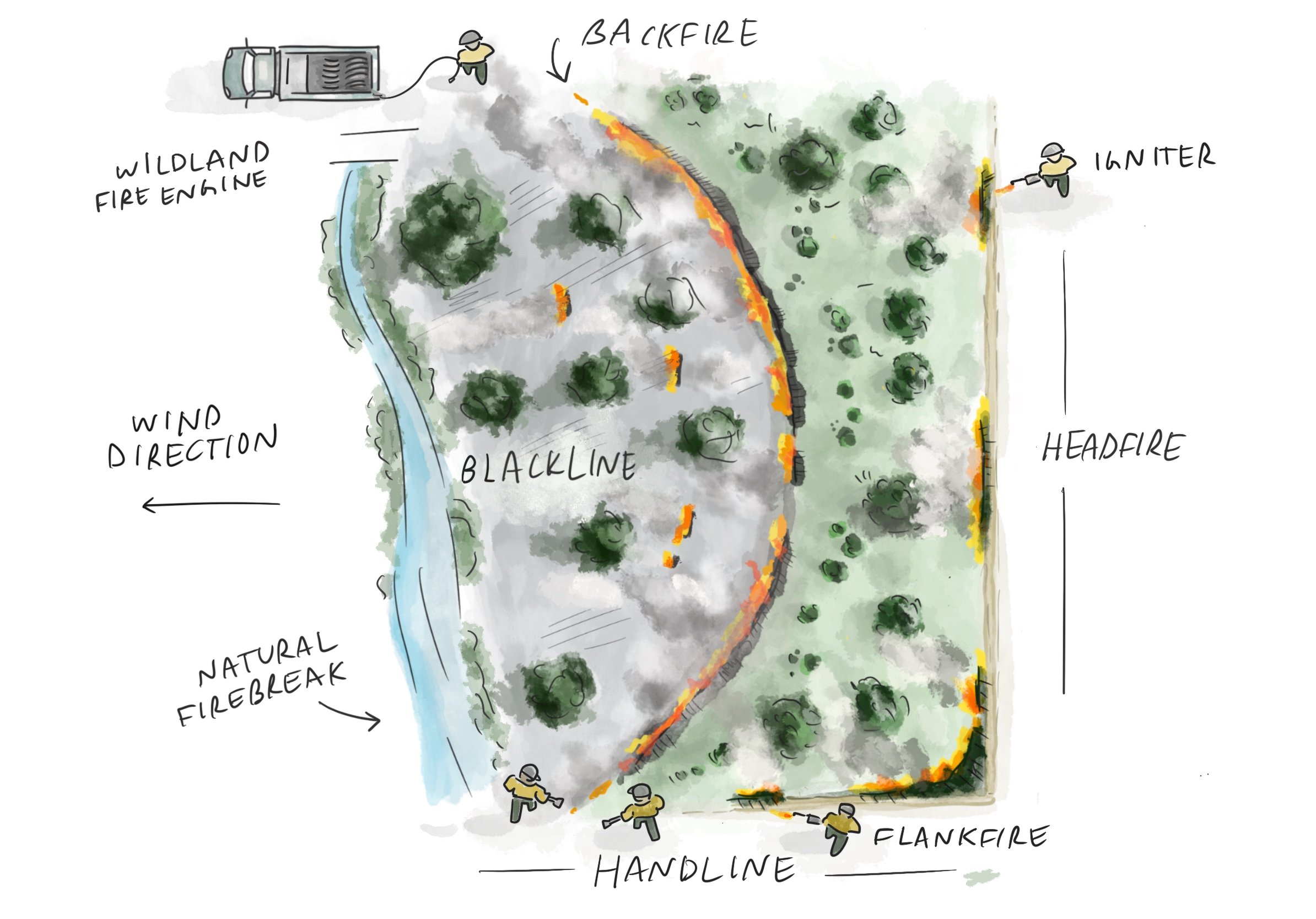by Emily Heber, media relations manager
Washington’s forests and eastern landscapes evolved with a naturally occurring cycle of fire, and for time immemorial Indigenous communities have used fire as a tool to maintain the health of these lands, but over a century of fire suppression has led to overgrowth which when combined with the growing threat of climate change leads to out-of-control wildfires. These fires threaten nature as well as nearby communities, their livelihoods, homes, and even health.
Bringing back “good fire” also known as prescribed fire to the landscape is an essential step for restoring the health of forests and ensuring communities are resilient and can recover quickly following wildfires. Research from Western science has reaffirmed the knowledge Indigenous communities have had for centuries, fire can be a tool for good.
Prescribed burns are a critical tool for improving and maintaining forest health, removing excess vegetation that could otherwise fuel a wildfire. Credit: John F Marshall/TNC
“Fire is a natural ecological process,” said Darcy Batura, forest partnerships manager for TNC Washington. “But fire suppression has removed low-intensity fires from Washington landscapes, making forests dense and even more susceptible to wildfire. Now, we’re putting fire back to work.”
In Washington, we are lucky enough to be able to conduct prescribed burns in both the spring and fall, when moisture in the soil and vegetation enables us to use low-intensity fire to clear the understory and debris. Reducing the fuel available in the case of a future possible wildfire and improving forest health and the diversity of vegetation, shrubs, and trees in the ecosystem.
Prescribed burns take into account the landscape and weather conditions, and require specific safety measures are used to limit and control the spread of good fire. Illustration by Erica Simek Sloniker / The Nature Conservancy.
Local, state, federal, Tribal and private agencies recognize that we all must work together to prepare for a future with a greater threat of fire. Fire doesn’t follow property lines, but moves across the landscape according to terrain conditions, winds and weather. We must work across agencies, across the lines of public and private property, to meet this challenge. At The Nature Conservancy, this work takes many forms—conducting prescribed burns on TNC preserves, working with partners and community members to conduct prescribed burns on their lands, and supporting workforce development to increase the scale at which prescribed burns are being carried out in Washington.
“Washington’s forests and fire-prone landscapes require urgent restoration, and a significant part of that entails using prescribed burns,” notes Sami Schinnell, TNC Cooperative Fire Director. “By conducting prescribed burns on TNC lands, supporting partner and community-led burns, and providing training opportunities for fire practitioners across Washington, TNC aims to increase the use of prescribed burns as a tool for improving ecosystem health and ensuring communities are more resilient to the impacts of fire.”
Featured image: Trained fire practitioners conduct a burn in the Roslyn Urban Forest as part of the 2021 Cascadia Prescribed Fire Training Exchange (TREX). Credit: John F Marshall/TNC






















